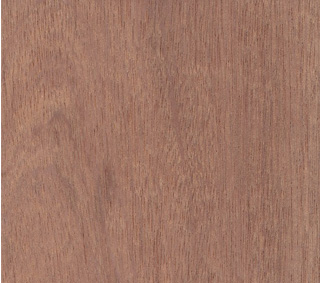SAPELE
| Origin: | Africa |
| Other names: |
Undianuno, Sapelli, Aboudikro, Penkwa, M’boyo, Sapelli-Mahogany, Assie, Sapelewood, Muyovu, Lifaki
|
WOOD DESCRIPTION
| Color: | red brown |
| Sapwood: | clearly demarcated |
| Texture: | fine |
| Grain: | interlocked |
| Interlocked grain: | slight |
| Note: | Some logs are not floatable. Wood pinkish brown to copper red brown. Possible presence of ring shakes and blister grains (longitudinal fissure in the shape of barley grain on the curved surface of round timber, generally concealed by the bark and linked to a disfunction in tree growth). Cedar like scent. |
NATURAL DURABILITY AND TREATABILITY
| Funghi (according to E.N. standards): | class 3 – moderately durable |
| Dry wood borers: | durable – sapwood demarcated (risk limited to sapwood) |
| Termites (according to E.N. standards): | class M – moderately durable |
| Treatability (according to E.N. standards): | class 3 – poorly permeable |
| Use class ensured by natural durability: | class 2 – inside or under cover (dampness possible) |
| Species covering the use class 5: | No |
| Note: | This species is listed in the European standard NF EN 350-2. |
